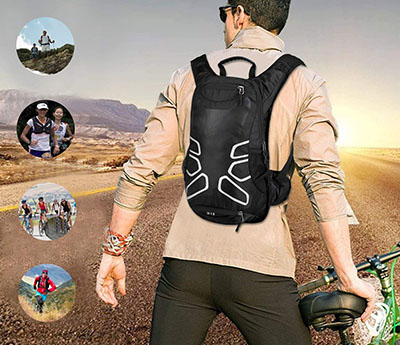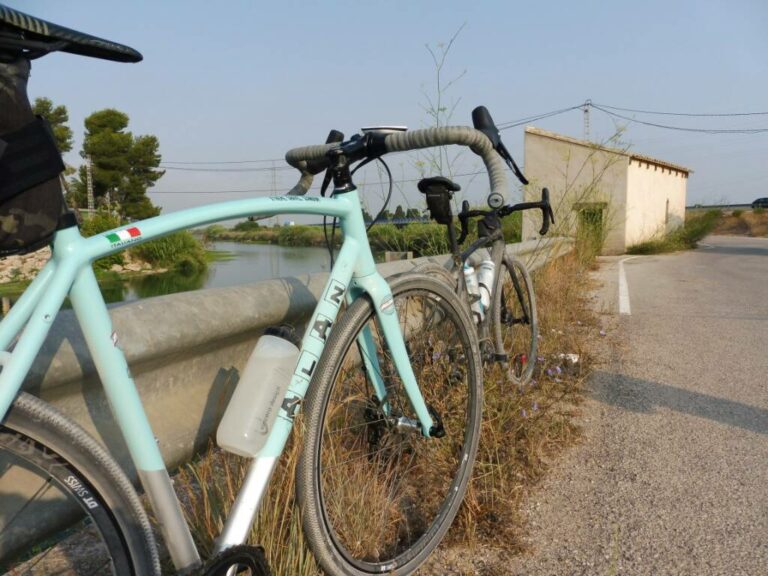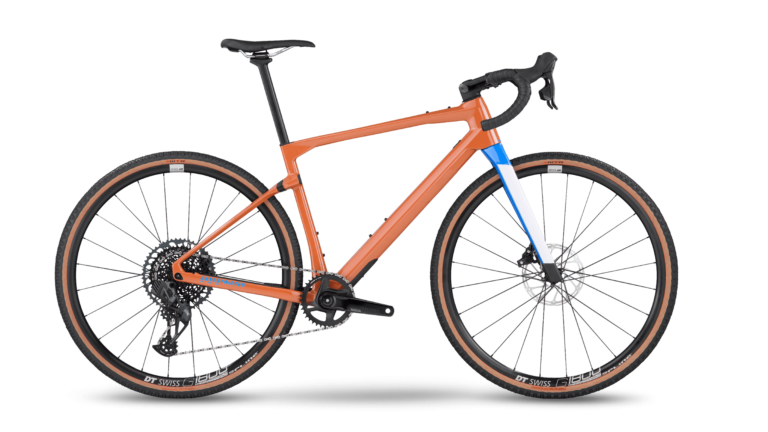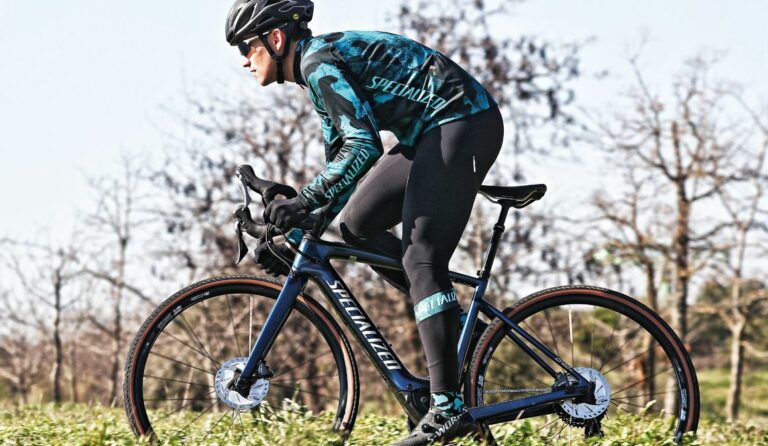Buyer’s guide to mountain bikes – get the best MTB for you
Buying a mountain bike can seem like a complicated affair, with a staggering number of different kinds of bike available at an equally astounding range of prices. Our buyer’s guide will tell you everything you need to know to get the right mountain bike for what you want to do, plus how much you need to spend.
[Updated 27th February 2020]
Mountain bikes can be broken down into three main categories; rigid, hardtails and full suspension. Those names are all self explanatory; rigid bikes don’t have any form of suspension, hardtails have a suspension fork at the front but nothing at the rear and full suspension bikes have bump smoothing shocks at either end.
De un vistazo
Rigid, hardtail or full suspension?
As a rule of thumb, rigid bikes tend to be the most affordable due to their simplicity and full suspension bikes the most expensive as they’re more complex to make, with hardtails splitting the difference in the middle. That said, it’s not always that simple, as you can buy extremely expensive rigid bikes and also very affordable full suspension machines. As a rule, hardtails tend to pedal more efficiently too, though they’re not as capable in really rough terrain.
What should it be made from?
A large proportion of the asking price is down to what the frame of the bicycle is made from. At the most affordable, end of the market – think catalogue shops and supermarkets – most bikes are made from cheap ‘high tensile’ or ‘hi-ten’ steel. While the name might suggest it’s a paragon of strength, in reality it’s only a step removed from scaffolding bar and it’s heavy and relatively weak compared to other materials.
Most decent quality mountain bikes will have aluminium alloy frames. Aluminium frames will be lighter and advanced manufacturing techniques mean that very complicated tube shapes can be produced inexpensively.
At the very top end of the market, carbon fibre composites are the material of choice. Frames made from this can be extremely lightweight and very strong, while ride characteristics can be tightly controlled by the way they’re put together. There are much fewer limits on the shape of the frame, allowing engineers to design in way that’s not possible with metal. The downside is that they’re incredibly expensive and time consuming to make.
Of course, it’s possible to get high quality steel frames, but these tend to be very much niche products, as is anything made from titanium.
What type of bike do you need?
There are a number of main mountain biking disciplines and as such, most bikes tend to fit into one of these categories.
Cross-country – often abbreviated to XC – bikes are all about covering big distances, preferably as fast as possible. At one point pretty much all mountain bikes fitted into this category, but nowadays, this mostly refers to bikes designed to do a specific kind of endurance racing, whether that’s short, intense events with multiple laps or big, marathon-style endurance rides.
As such, weight is all important and the bikes are designed to be as fast rolling as possible, with relatively narrow, lightly treaded tyres rarely wider than 2.2” fitted as standard. Most modern cross-country bikes use a 29” wheel, as that helps the rider to roll over obstacles.
Even at the highest levels of racing, hardtails are still used thanks to their weight and pedalling efficiency advantages over full suspension machines, though these are becoming more popular. It’s very rare for a cross-country bike to have more than 120mm of suspension travel at either end and 80-100mm is much more common, usually with the ability to prevent the suspension from moving at all with a ‘lockout’ switch. That means that no rider effort is wasted by compressing the suspension during hard, out of the saddle efforts or on big climbs.
The bike geometry is usually about keeping the rider low and stretched out for efficient pedalling. Steep head angles – rarely slacker than 69º – and narrow handlebars are paired with long stems, meaning they’re stable in a straight line but will rapidly be able to change direction when needed.
It’s those handling characteristics that mean that unless you intend to use them in competition or really enjoy covering huge distances or hurting yourself uphill, you might well be better off with the more stable and predictable handling of a trail bike.
Buy if: You want to go as far as possible, as fast as possible and you’re not too bothered about riding technical descents.
How much do I need to spend?
Entry: £400
Good: £1500
Amazing: £5000
The modern trail bike is the do-it-all workhorse. It’s designed to be equally at home on the descents as it is on the climbs, with the balance of weight to durability being paramount. Unless you’re got very specific goals in mind, it’s probably the best compromise for a rider that wants to be able to try a little bit of everything.
Trail hardtails tend to have much longer travel forks than comparable cross-country machines, with from 120-140mm of travel being the norm. They’re often called ‘hardcore hardtails’ because of the more aggressive riding intentions. Full suspension trail bikes have a similar amount of overall travel and it’s often biased to have a little bit more up front to give good descending performance without impacting too badly on how the bike climbs. Most bikes will have suspension that can be stiffened up, if not locked out, to help prevent wasted effort during the climbs.
Debate rages over the best wheel size for a trail bike, with almost every different size being put to use. Most common of all is the 27.5” or 650b wheel with a tyre around 2.3-2.5” wide, though the ‘Plus’ standard of a wider rim and tyre up to 3.0” in diameter is being pushed by many brands, especially on hardtails where it gives a greater degree of comfort. That said, the 29” wheel is very popular across the board too. Tyres tend to have much more aggressive tread than cross-country bikes, though still with relatively low rolling resistance. Reinforced carcasses and tubeless compatibility are common to help reduce the chance of punctures on more expensive bikes too.
Trail bikes tend to have more relaxed head angles of around 65-68º paired to shorter stems from 30-70mm in length. That makes them much more stable when descending, with less chance of you getting thrown over the bars on steep or rough sections. Handlebars are usually much wider for extra leverage and control too. On more expensive bikes it’s also common to have seatpost that can be adjusted for height on the fly, either with a saddle or handlebar mounted control. Called ‘dropper posts’, they allow you to rapidly move from a climb to descent without having to stop and drop your saddle manually. It’s also becoming more common to have a drivetrain with just a single front chainring paired to a wide ratio cassette rather than traditional multiple chainring setups. That helps reduce weight and complexity at the cost of overall gear range.
Buy if: You enjoy the uphills as much as the downhills and want a versatile do-it-all bike.
How much do I need to spend?
Entry: £600
Good: £1500
Amazing: £5000
Enduro is a race format where timed downhill sections are linked by untimed climbs, but in recent years it’s been used to describe longer travel trail bikes made for seriously aggressive riding. They’re as close as you can get to a gravity specific downhill machine while still being capable of sustained climbing.
They tend to have anywhere from 150-170mm of travel with tough, chunky frames designed to cope with some serious abuse. Hardtails are extremely rare, with most bikes being full suspension. Forks and shocks often have damping that can be finely adjusted, while some use coil rather than air springs to better cope with rough terrain.
Though there are some 29” wheeled enduro bikes, 27.5” are by far the most common, as the smaller diameter hoops can be stiffer and stronger for a given weight. Tyres are around 2.4-2.6” wide and almost always have a reinforced casing, as well as a stickier rubber compound for better grip.
Frame geometry is a bit like that of a trail bike, but with generally slacker head angles of 64-66º to cope with the extra travel and steeper terrain they’re likely to be used on. They still tend to have plenty of room in the top tube so that you can move around on them, with frame reach getting ever longer in recent years. Most bikes will be equipped with a single ring drivetrain, which often has a device that helps hold the chain in place for extra security on rough ground. Dropper posts are de-rigeur on all but the cheapest bikes.
Buy if: You want to take on steep and difficult descents, but still get up to the top under your own power.
How much do I need to spend?
Entry: £1300
Good: £3000
Amazing: £6000
As the name suggests, these are all about getting to the bottom of the hill as quickly as possible, with little regard to getting back up to the top under your own power. They’re built to be extremely tough and capable of tackling the wildest terrain and biggest jumps possible. This means that they have lots of suspension travel, with around 200mm at either end being the most common figure. Coil sprung shocks are common and forks are of the triple clamp variety, where the upper legs extend above the head tube of the bike, with additional bracing to improve stiffness and strength. Again, dampers tend to offer a wide range of adjustment to allow them to be fine tuned to different tracks. Almost all bikes have 27.5” wheels shod in grippy, heavily reinforced tyres with aggressive tread, though some manufacturers are now experimenting with 29” wheels.
Downhill bikes are generally best suited to people that want to go racing, take part in organised uplift days or go to the Alps, as the weight and descending focused design means they’re hard work to get uphill and often unrewarding on flatter trails.
Buy if: You want to throw yourself down the steepest hills possible and don’t care about how hard it is to get back up them.
How much do I need to spend?
Entry: £1500
Good: £3000
Amazing: £6000
Fat bikes are designed to work on very soft terrain, such as sand or snow. In order to do this, they have very wide, almost cartoonish tyres, hence the name. Typically, they run 26” wheels with tyres up to a staggering 5” wide on dedicated rims. This allows then to be run at extremely low pressures and the large footprint this creates gives excellent floatation and traction on soft surfaces.
Originally designed to take part in huge distance races in the snow, such as the Iditabike in Alaska, they’ve become popular with people that live in places that have harsh, snowy winters or people who fancy something quirky and different. Most fat bikes are fully rigid, as the tyres act as suspension, though there are some hardtail and full suspension designs. Most frames tend to have plenty of places to attach water bottles, racks and luggage in a nod to their long-distance racing roots.
Buy if: You want to go adventuring on sand or snow, or just fancy something extremely different.
How much do I need to spend?
Entry: £1300
Good: £2000
Amazing: £4000
The electrically assisted mountain bike, or e-MTB, has really taken off in the few years. With the rough, tough image of an Gravelerser and all the gung-ho attitude that goes with it, the addition of a battery and motor on the bike seems less of an issue. And unlike the early days of e-bikes, when everything looked a bit bolted together, the styling of current e-MTBs is really on point, with the e-bits well camouflaged by the frame and clever use of integrated graphics.
The e-MTB bike choices begin with a question of suspension, you can get e-hardtails and e-bikes with full suspension. E-hardtails have a suspension fork at the front and a rigid frame – fairly conventional like a regular hardtail. These are cheaper and usually lighter than comparable specification full-suspension models.
Full-suspension e-bikes are heavier, more expensive and complex to set up, they will have front and rear suspension similar to trail and enduro bikes with travel typically of 140-170mm. If you think your mountain biking is going to be the lighter towpath and forest parks, with loops of well graded trail centres, then the hardtail is a great choice. It’ll give you the traditional mountain bike experience, with the added climb crushing addition of electrical assistance. If you’ll be hitting the singletrack trails and have visions of finding the limits of traction as you search for more e-MTB action, then full-suspension is definitely the way to go.
Frames come in both carbon and alloy and you’ll find e-bikes with both 27.5″ and 29er wheels, the former was very popular but recently the 29er is becoming more prevalent.
The motor on any e-MTB with serious Gravelers intentions is positioned at the cranks. This is called a mid-motor design for obvious reasons. Some e-bikes have their motor located in the front or rear hub but these motors are much less effective for Gravelersing as they compromise the handling of the bike (at the rear) or the performance of the suspension fork (at the front). Expect a high performance 250w motor with sensors for torque and cadence to supply the data it needs to know how much electrical assistance you need and when you need it. Major manufacturers are mostly using the same three or four motors and batteries, and providing you buy from a major, recognised mountain bike brand – generally those who are already famous for standard mountain bikes. You’ll not go far wrong. Some brands now have a lighter e-bike with a less powerful motor, these are bikes designed to ride more like ‘normal’ bikes but still with some, more intuitive, power assistance.
The battery for an e-MTB is usually located on the down tube, or increasingly built into it. For Gravelers mountain biking the low relatively central position of both a mid-mount motor and downtube battery allows for a balanced and low centre of gravity and that means it’s easier to hustle the bike around trails with less physical effort and greater stability. Most batteries are about 500wh but some bikes come with bigger capacity ones (650 or 700wh) for a longer range.
Buy if: You want to ride more, both uphill and downhill
How much do I need to spend?
Entry: £1300
Good: £2000
Amazing: £4000+




















